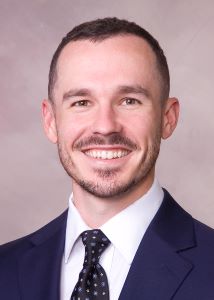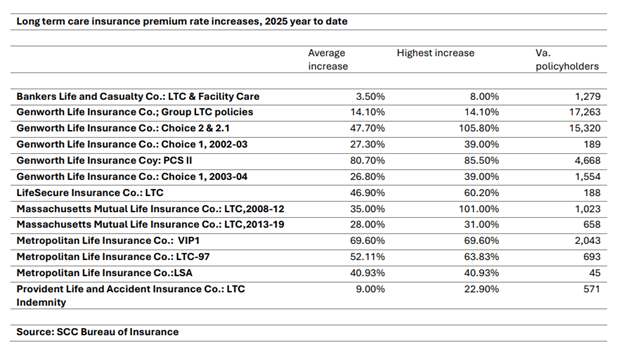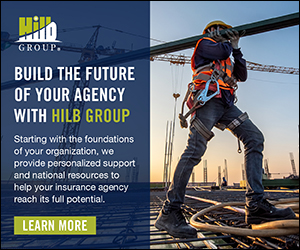 |
||||||||||||||
| Archive | Subscribe | Printer Friendly | Send to a Friend | www.iiav.com | ||||||||||||||
| August 2025 | ||||||||||||||
|
IIAV News
Revolutionizing Risk
Welcome to the 2025 Young Agents Conference, where young insurance agents are revolutionizing risk! This conference is jam-packed with industry insights, top-notch tools, and best practices that will help young agents learn, connect, & grow.
Stevenson Cocke, of Richmond, Virginia has been named to join IIAV’s staff as the new membership director. Stevenson holds a BA degree in Marketing from Marshall University and brings sales and account management experience to the association.
Stevenson will work to meet with current members and ensure that they are benefiting from the wide range of products and services available through the association. In addition, he will identify agencies that are not members and introduce them to the benefits of IIAV and the Big “I” federation. “I recently attended the Big “I” Legislative Conference in Washington and it was an eye-opening experience at the level of representative advocacy supported by the association,” noted Stevenson. “IIAV and IIABA are powerhouse associations both on the state and national level and they have tremendous resources available to strengthen independent agencies of all sizes. I look forward to working with them.” “We’re excited to have Stevenson on board with IIAV. He brings a level of experience that will benefit all of our programs toward the benefit of our wide range of member agencies,” noted Bob Bradshaw, IIAV President & CEO. IIAV members – both agencies and companies – can contact Stevenson at scocke@iiav.com and he will work with you to discuss IIAV services and programs for member agencies and sponsorship and exhibiting opportunities for companies. The Workplace Advisors
Back in January, I wrote in this report that there were lots of unknowns that might impact the US labor market in 2025. Halfway through the year, guess what? The picture isn’t much clearer. But here’s what’s happened that is important for you to know. The Workplace Advisors
The Pay Transparency trend is no longer a trend; it’s a reality. Across the United States, many state-level laws and local ordinances are being enacted to increase transparency in salary negotiations and in the overall hiring process. Just this year, five states have added new text and regulations relating to pay transparency requirements. On a local level, many large cities and industrial centers have additional requirements (New York City, Jersey City, Cleveland, to name a few). The management and execution of these changes, especially in areas where both state and local requirements are in effect, can be challenging. Arguably more complex are remote/hybrid roles and territory-based positions where an employee will be based outside of the organization’s “home state.” Question: We want our next hire to speak a specific language or multiple languages. Can we ask them during the hiring process?
Answer: What you can and cannot require depends on the essential requirements of the position. This includes any aspect of the job. Federal, state, and local laws prohibit discrimination against a person for numerous protected characteristics, so any requirement must have a legitimate business reason, or else a company could face a discrimination claim. For example, if the employee needs to speak two languages to perform their job as a translator, you can ask if they are proficient in those languages. You can also ask about their proficiency to ensure they can work at the level you need them to. You might also consider testing them to confirm this proficiency. You can also require employees to understand a specific language if needed for safety purposes. For example, if your employees work with dangerous chemicals, you can require that they read and understand instructions and warning labels for safety reasons, but you cannot require that they be fluent beyond that understanding. However, if you just want someone to speak a specific language because it would "make things easier," then you probably cannot hire for it specifically. You also cannot require an employee to speak a specific language during personal conversations at work, so that you can understand what they are saying. You can, and should, have different requirements for each position based on what that person needs to do, and then tailor your hiring process to find the right person to meet those needs.
Independent Agent
Best Practices agencies maintain excellent operating and financial results. ALEXANDRIA, VA, August 12, 2025—Best Practices agencies continue excellent organic growth and profitability, according to the 2025 Best Practices Study by the Big “I” and Reagan Consulting. The Best Practices Study is the first of a new three-year cycle, examining the firms that newly qualified as a 2025 Best Practices agency. The annual study, conducted jointly in a longstanding partnership between the Big “I” and Reagan Consulting for the past 32 years, provides critical performance benchmarks across agency revenue categories ranging from under $1.25 million to over $100 million. This year’s study includes two new revenue categories to replace the largest revenue group of over $25 million from previous years. The study now categorizes results for agencies with $25-100 million and for agencies with over $100 million. Axios
Car insurance rates could rise more by the end of the year with tariffs than without them, a new projection finds. The analysis shows another way that Americans pay for higher tariffs. Virginians' average annual cost of full-coverage car insurance could jump by 5.13% between June and December if tariffs stay in effect, per a new report from insurance-comparison platform Insurify. It'd increase 2.13% otherwise. In raw terms, the average cost for Virginians would be $2,519 with tariffs and $2,447 without them. On August 5th, Reagan Consulting, in partnership with the Big “I”, will release the Best Practices Study. This marks the 33rd consecutive year that Reagan Consulting has conducted the Best Practices Study, which offers benchmarking data for leading independent insurance brokers across the United States. Notably, for the first time since 2004, a new revenue band has been introduced — firms with more than $100 million in annual revenue. What sets this revenue band apart from the rest? Let’s spotlight three metrics that not only distinguish these firms but reveal a path to elevated performance and lasting success.
A key distinction between firms in the over $100 million revenue band and those in the other six revenue bands is the average number of shareholders. Best Practices firms exceeding $100 million in annual revenue average ~150 shareholders—an amount six times greater than that observed in the $25–$100 million band. Notably, these larger firms also maintain a Weighted Average Shareholder Age (WASA) that is approximately seven years younger than their counterparts in smaller bands. This data highlights the strategic importance that high-performing large agencies place on extending equity ownership to top talent. By broadening shareholder participation, these firms can attract and retain top talent, supporting both leadership continuity and sustained growth.
Source: Reagan Consulting’s 2025 Best Practices Study Another important consideration for firms committed to internal perpetuation is expanding their shareholder base. As valuation multiples continue to rise, agencies that restrict ownership to a limited group may find themselves with fewer options when planning for succession. Broadening equity participation is not only a strategic move for talent retention, but also a practical perpetuation necessity. A clear trend among firms in both the $25–$100 million and over $100 million revenue bands is a heightened focus on AI investment. 84.2% of firms with revenues over $100 million and 60% of those between $25–100 million have invested in AI, compared to 25% or less for all smaller revenue bands. The introduction of generative AI tools, such as OpenAI’s ChatGPT in 2022, has accelerated the adoption of AI across the industry. With an increasing number of off-the-shelf AI products, agencies are integrating these technologies to streamline workflows and improve operational efficiency. It is expected that more agencies under $25 million in annual revenue will invest in AI in the coming years.
Source: Reagan Consulting’s 2025 Best Practices Study To capitalize on the potential of AI, agencies should consider designating a dedicated leader to oversee the development and implementation of their AI strategy. This individual, equipped with both industry expertise and technological knowledge, can identify high-impact opportunities for AI integration within existing workflows. By establishing clear ownership of AI initiatives, firms position themselves to harness these emerging tools more effectively – enhancing efficiency and reinforcing their competitive edge. Agencies with over $100 million in revenue have twice the debt level of other groups and source debt from more diverse providers. Their average debt is 4.1 times Pro Forma EBITDA; other revenue bands do not exceed 1.7 times.
Since 1993, Reagan Consulting and the Big “I” have partnered to produce The Best Practices Study, a comprehensive examination of the top-performing agencies across the country. The study compiles benchmarking data on the key metrics of agency performance and value, including revenue growth and profitability, financial stability, expense management, and sales and operations productivity.
Benjamin Thompson Director of Technology, Reagan Consulting ReaganView is Reagan Consulting’s forum for providing an occasional perspective on issues and opportunities relevant to the insurance distribution industry. www.scc.virginia.gov/
RICHMOND – The State Corporation Commission (SCC) is providing an opportunity for members of the public to view proposed health insurance rates in Virginia’s individual and small group markets, as submitted by insurers for plan year 2026. Also available is information related to the Virginia health insurance market as a whole; key factors in rate changes; and the rate impact or change for identified health insurance products the insurers propose to be offered in the individual and small group markets.
|
||||||||||||||












